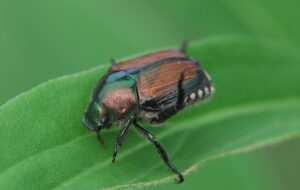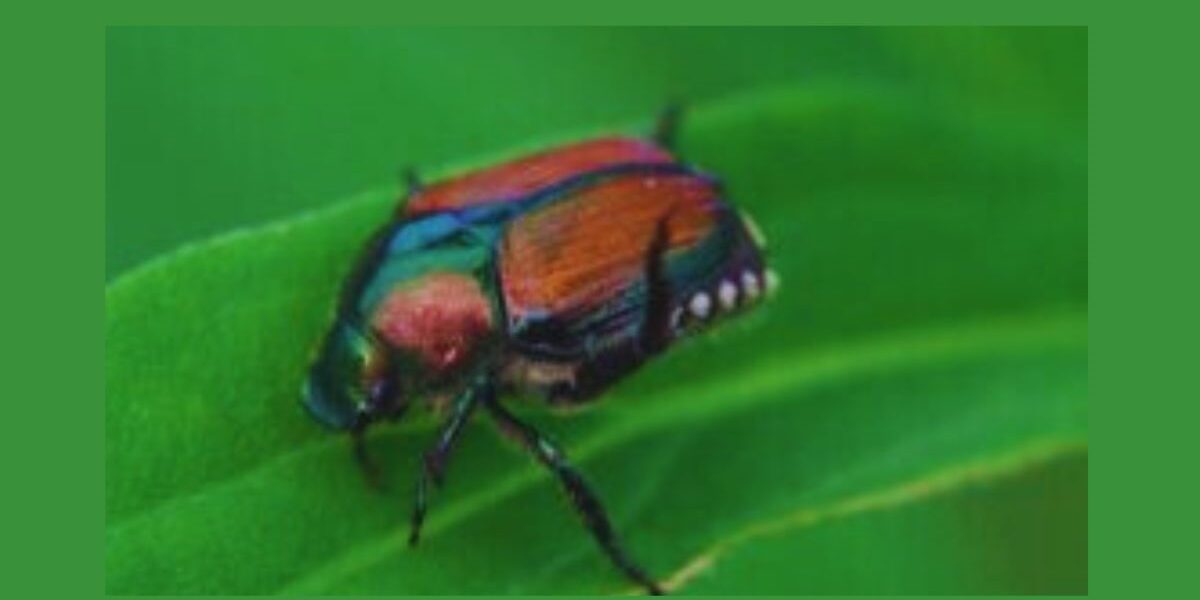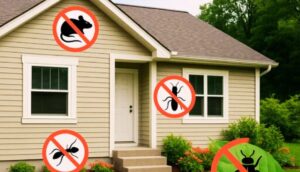Natural Garden Defense You’ll Love

If you’ve ever walked out to your garden and found your roses or vegetables looking like lace, you’ve probably met the Japanese beetle. These shiny green-and-copper pests can transform healthy, lush plants into skeletons in days, causing your garden to become a nightmare if quick action is not taken..
While chemical sprays work, many gardeners prefer a natural, pollinator-friendly approach. One of the best ways? Plant flowers, herbs, and shrubs that Japanese beetles just don’t like.
In this guide, you’ll discover:
-
Which plants repel Japanese beetles naturally?
-
How to use them in your garden layout.
-
Why this method works.
-
Bonus tips to protect your plants without harming good bugs.
Let’s dive in and turn your garden into a place Japanese beetles avoid.
Why Japanese Beetles Are a Problem
Japanese beetles aren’t picky eaters. They feed on over 300 plant species, including roses, beans, grapes, and fruit trees. Once they arrive, they come in groups, making them hard to control.
The real trouble?

-
They skeletonize leaves, leaving just the veins.
-
They attract more beetles with pheromones.
-
Their larvae (grubs) live in soil, damaging grass and plant roots.
Because of this, stopping them early is key. And planting what they dislike can reduce their food options dramatically.
How “Plants Japanese Beetles Hate” Works
Some plants naturally produce scents, chemicals, or textures that beetles find unappealing. Others simply aren’t on their menu. When you mix these into your garden:
-
You break up their feeding pattern.
-
You make your yard less inviting.
-
You protect your favorite plants by surrounding them with deterrents.
This method is called companion planting for pest control — and it’s one of the easiest organic defenses you can use.
Top 15 Plants Japanese Beetles Avoid

Here’s the list you’ll want to keep handy when planning your garden.
1. Garlic
Strong-smelling plants like garlic are excellent natural repellents. Plant it near roses or beans to deter beetles. Plus, you can harvest it for your kitchen.
2. Chives
Chives give off a scent beetles dislike. They also attract pollinators like bees, making them a win-win in your garden.
3. Onions
Similar to garlic, onions are rarely touched by Japanese beetles. Use them as borders or between more vulnerable plants.
4. Catnip
The minty aroma of catnip isn’t just for cats — it keeps beetles away. Just be ready for feline visitors!
5. Tansy
This old-fashioned herb is a strong deterrent to beetles. However, plant it with care, as it can spread quickly.
6. Rue
With its bitter scent and taste, rue is another beetle-resistant herb. It’s also drought-tolerant, making it easy to grow.
7. Larkspur
Japanese beetles hate larkspur because it’s poisonous to them. These flowers also add bright colors to your garden beds.
8. Marigolds
Marigolds repel many garden pests, including beetles. These garden beauties are so simple to grow and bloom all summer long.
9. Leeks
Part of the allium family, leeks share the same repellent qualities as garlic and onions.
10. Lavender
The soothing scent emitted is not appealing to Japanese beetles; they hate and will avoid lavender at all costs. Plant it near vegetables or pathways for beauty and protection.
11. Wormwood
Wormwood contains absinthe-like compounds that beetles dislike. Its silvery foliage adds texture to gardens.
12. Calendula
It is also known as pot marigold, calendula will keep beetles away but will attract beneficial insects.
13. White Geraniums
Interestingly, white geraniums can stun Japanese beetles temporarily, making them less of a threat.
14. Sweet Basil
The strong aroma of basil works as a deterrent while giving you fresh herbs for cooking.
15. Peppermint
Minty scents make beetles turn away. Plant peppermint in pots to prevent it from spreading too much.
How to Use These Plants for Maximum Protection
Here’s how to make these beetle-repelling plants work for you:

-
Create Borders – Plant garlic, onions, or marigolds along the edges of your garden.
-
Mix and Match – Place deterrent plants between your most vulnerable crops.
-
Add Containers – Grow mint, basil, and lavender in pots around patios or decks.
-
Use Layers – Combine tall deterrent plants like tansy with low-growers like chives for better coverage.
This isn’t a “plant once and forget” solution. You’ll still want to monitor your garden, but it reduces beetle damage significantly.
Other Natural Ways to Control Japanese Beetles
While deterrent plants help, you can combine them with other eco-friendly methods:
-
Hand-pick beetles in the early morning when they’re sluggish.
-
Dropping Japanese beetles into a bucket of soapy water will kill them quickly.
-
Beneficial nematodes, for example, will target grubs in the soil.
-
Apply neem oil to infested plants as a natural pesticide.
-
Install row covers during peak beetle season.
The more strategies you combine, the better your results.
10 Frequently Asked Questions About Plants Japanese Beetles Hate
1. Do these plants completely stop Japanese beetles?
Not entirely. They help deter beetles and protect nearby plants, but you may still see some beetle activity.
2. Will Japanese beetles eat any of these plants if they’re hungry enough?
In rare cases, yes. If food is scarce, beetles might sample them, but they generally prefer other plants.
3. Can I plant these alongside vegetables?
Absolutely. Many, like basil, chives, and onions, pair perfectly with vegetable crops.
4. Which plants are most effective as a deterrent?
Garlic, chives, catnip, and tansy are among the strongest natural repellents.
5. Are these plants safe for pets?
Some plants, like rue and tansy, can be toxic to pets. Always research before planting if you have animals.
6. Can I use potted plants to deter Japanese beetles?
Yes. Mint, basil, and lavender work great in pots and can be moved where needed.
7. Will planting these also repel other pests?
Yes. Many deter aphids, mosquitoes, and other garden pests as well.
8. Do I need to replant these every year?
Some are perennials (lavender, chives), while others are annuals (marigolds, basil). Mixing both gives year-round protection.
9. How close should I plant them to my vulnerable crops?
Within 1–2 feet is ideal for maximum protection.
10. Are there plants Japanese beetles love that I should avoid?
Yes. Roses, grapes, raspberries, and beans are beetle favorites, so keep those well protected.
Conclusion: Winning the Battle Against Japanese Beetles Naturally
Japanese beetles can feel unstoppable once they arrive, but you have more control than you think. By planting a mix of herbs, flowers, and vegetables they dislike, you make your garden less appealing and break their feeding cycle.
This approach is:
-
Eco-friendly – Safe for pollinators and beneficial insects.
-
Budget-friendly – Many of these plants are inexpensive and multipurpose.
-
Attractive – Adds beauty, fragrance, and variety to your garden beds.
You don’t need to fight Japanese beetles with chemicals alone. With smart planting choices, you can enjoy a thriving garden that beetles simply don’t want to visit.
So grab some garlic bulbs, a few pots of lavender, and maybe a handful of marigold seeds — your plants (and the bees) will thank you.











